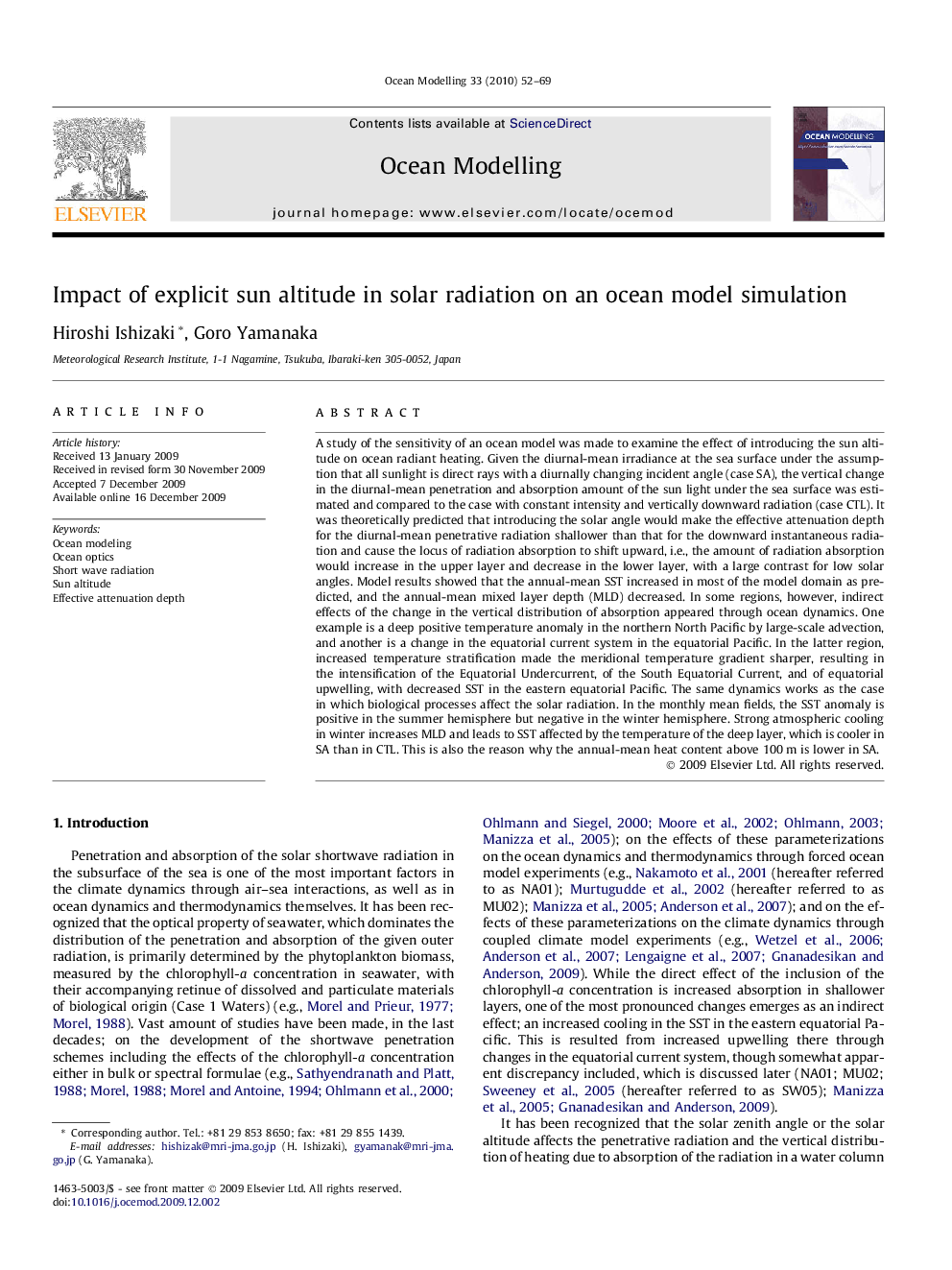| کد مقاله | کد نشریه | سال انتشار | مقاله انگلیسی | نسخه تمام متن |
|---|---|---|---|---|
| 4552433 | 1627814 | 2010 | 18 صفحه PDF | دانلود رایگان |

A study of the sensitivity of an ocean model was made to examine the effect of introducing the sun altitude on ocean radiant heating. Given the diurnal-mean irradiance at the sea surface under the assumption that all sunlight is direct rays with a diurnally changing incident angle (case SA), the vertical change in the diurnal-mean penetration and absorption amount of the sun light under the sea surface was estimated and compared to the case with constant intensity and vertically downward radiation (case CTL). It was theoretically predicted that introducing the solar angle would make the effective attenuation depth for the diurnal-mean penetrative radiation shallower than that for the downward instantaneous radiation and cause the locus of radiation absorption to shift upward, i.e., the amount of radiation absorption would increase in the upper layer and decrease in the lower layer, with a large contrast for low solar angles. Model results showed that the annual-mean SST increased in most of the model domain as predicted, and the annual-mean mixed layer depth (MLD) decreased. In some regions, however, indirect effects of the change in the vertical distribution of absorption appeared through ocean dynamics. One example is a deep positive temperature anomaly in the northern North Pacific by large-scale advection, and another is a change in the equatorial current system in the equatorial Pacific. In the latter region, increased temperature stratification made the meridional temperature gradient sharper, resulting in the intensification of the Equatorial Undercurrent, of the South Equatorial Current, and of equatorial upwelling, with decreased SST in the eastern equatorial Pacific. The same dynamics works as the case in which biological processes affect the solar radiation. In the monthly mean fields, the SST anomaly is positive in the summer hemisphere but negative in the winter hemisphere. Strong atmospheric cooling in winter increases MLD and leads to SST affected by the temperature of the deep layer, which is cooler in SA than in CTL. This is also the reason why the annual-mean heat content above 100 m is lower in SA.
Journal: Ocean Modelling - Volume 33, Issues 1–2, 2010, Pages 52–69